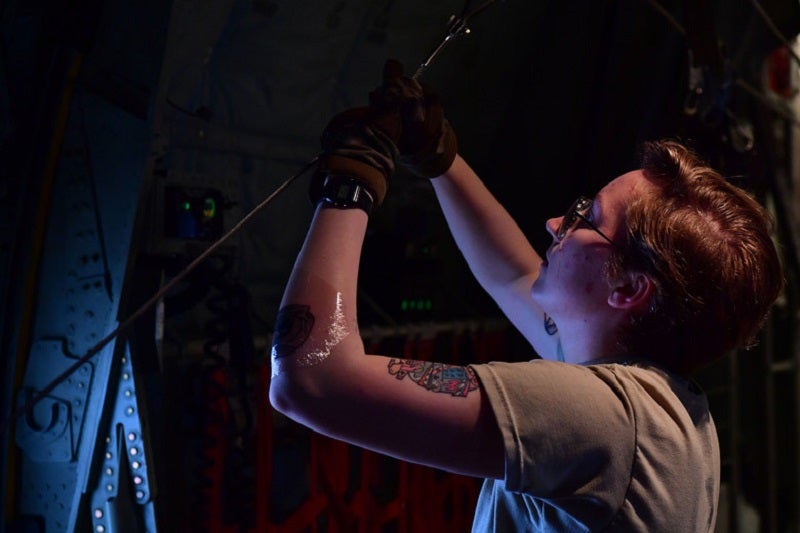
Airmen from the US Air Force’s 34th Combat Training Squadron (CTS) and the US Army have completed the Green Flag Little Rock (GFLR) 20-03 exercise that was held.
The airmen and army collaborated with coalition forces from Canada during the joint forcible entry and airborne assault training at the Joint Readiness Training Center located at Fort Polk and Alexandria in Louisiana, US, from 11-21 January.
The joint live-training tactical GFLR 20-03 exercise was conducted in conjunction with the army’s final certification event, Joint Readiness Training Center 20-3.
GFLR 20-03’s focus was on combat airlift and airdrop operations, interoperability with the US Army’s joint and international partners, in addition to survival, evasion, resistance and escape.
US Air Force lieutenant colonel Phillip Newman said: “In the 34th CTS, our focus is on improving the joint relationship between the mobility airforces and our joint partners.
“We’re trying to give our crews combat-like experience before they deploy by increasing exposure to working with an external command and control agency.”
Other partners in this exercise are US Army 921st Contingency Response Squadron of Travis Air Force Base in California, 321st Contingency Response Squadron at McConnell AFB in Kansas, as well as six C-130J Super Hercules from the 41st and 61st Airlift Squadrons from Little Rock AFB in Arkansas.
Four C-17 Globemaster III’s from the 62nd Airlift Wing at Joint Base Lewis-McChord in Washington, two C-17 Globemaster III’s from the 437th Airlift Wing at JB Charleston in South Carolina, in addition to two C-130J Super Hercules from the Royal Canadian Air Force are also involved.
The training was aimed at simulating an airfield assault, airfield opening and subsequent follow-on sustainment support.
Participants were trained together to ensure efficient interoperability for potential future operations.
The exercise promoted interoperability between the US Army, US Air Force and international partners and focused on the ability to operate cohesively in an austere environment.
Newman further added: “It allows the US Army users to become familiar with different regulations the US Air Force has on preparing cargo before it can be loaded on an aircraft.”



